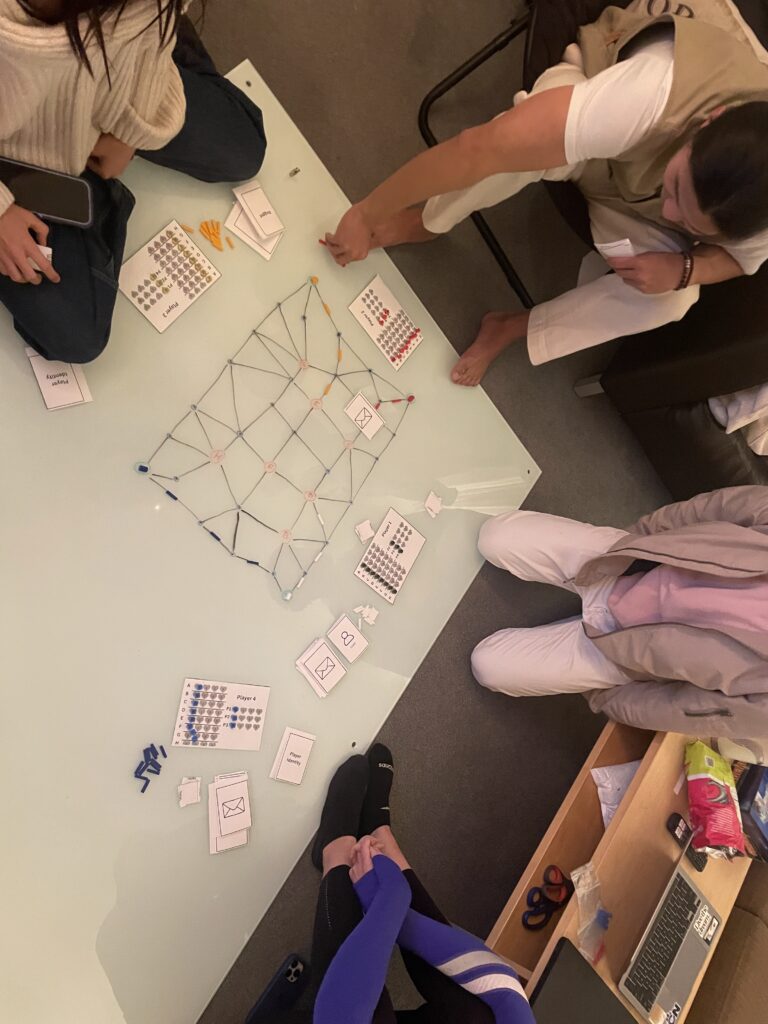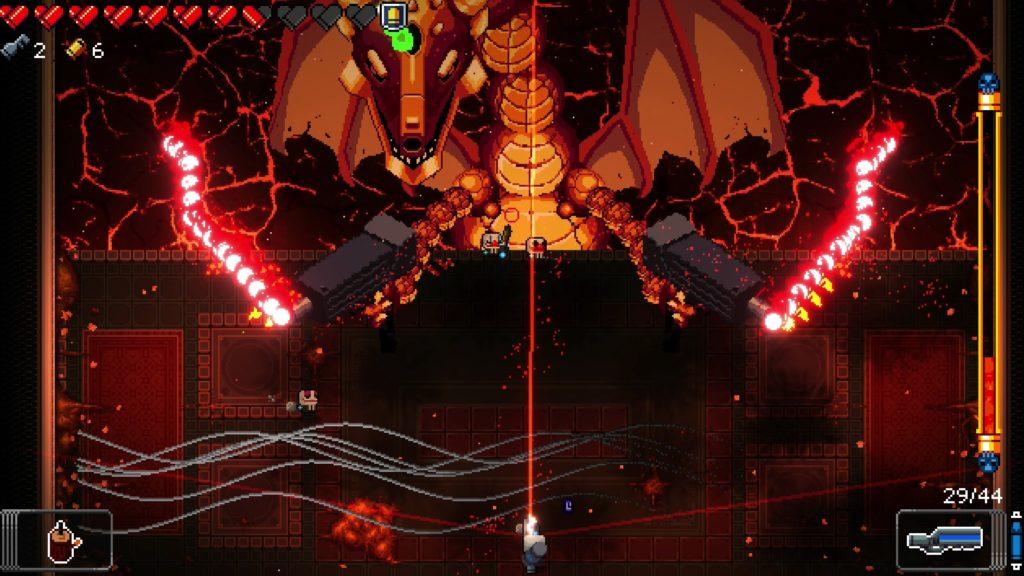We playtested with four STEM graduate students. We targeted this demographic for two reasons. First, university students are more exposed to social deduction-style games such as Secret Hitler, Mafia, and One Night Werewolf. Second, STEM students — particularly those studying CS and Symbolic Systems, as we had sampled in our playtest group — are more likely to be interested in a game about the ILOVEYOU / Lovebug virus.

Image: Our playtesters playing Lovebug!
Throughout our playtest, people seemed genuinely interested in the game, thought the system we were modelling was intriguing, and pitched really cute design ideas for our cards and board! This iteration was also much more playable than previous versions — the larger graph and increased number of NPCs added more complexity and dynamism to the game. However, from this playtest, we learned that despite the scaling of our board, we need to make it even larger. The current state is still too small and crowded. As a result, the goal cards were much too easy. Furthermore, there was not enough risk embedded in the game, thus undermining the intended social deduction aspect of the system.
As a result, we plan to make the board bigger, space players out, and rework our goal cards to add more of a challenge and risk. With reworked goal cards and more competing interests, this should also reintroduce the social deduction aspect to the game.
Questions:
- The math. Do you have any recommendations on how we optimize the amount of NPCs and graph paths other than just repeated playtests?

- How should we balance the system accuracy with fun game dynamics?



